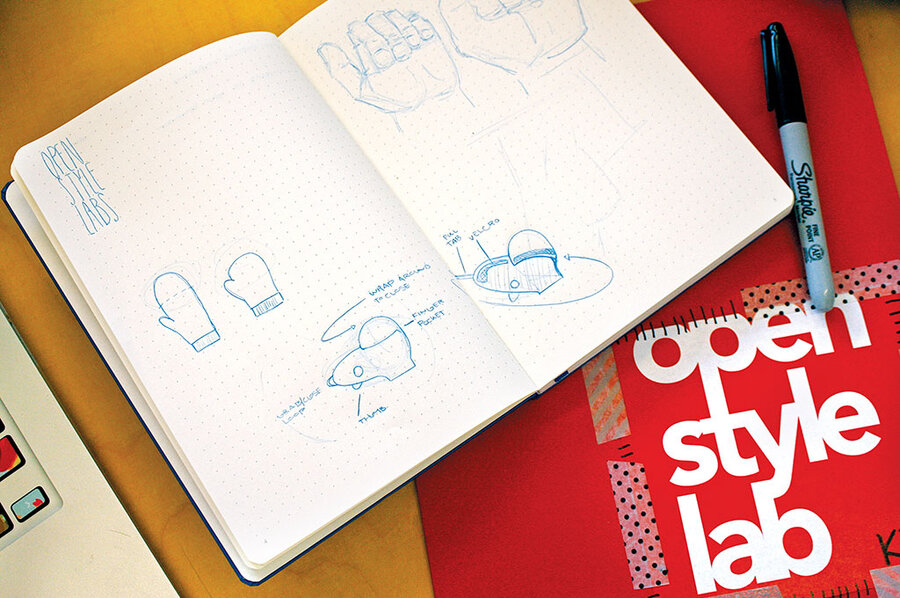When you have to cut your dress off, function trumps style
Loading...
| Cambridge, Mass.
Angie Shyr had worn her new black, form-fitting dress for her performance at a big concert. The musician, whose stage name is Jackie Highway, had no problem pulling it on over her head when she got dressed – but when she got home to take it off, she couldn’t. Her severe arthritis was acting up and she couldn’t grasp the tight material firmly enough to pull it off. She walked around her apartment for five hours trying, even asking two neighbors for help. Finally, she says, “I thought, ‘there is no way I can get this dress off.’ ” She grabbed a pair of scissors and cut it off, right down the front.
Experiences like Ms. Shyr’s were the inspiration for Grace Teo and Alice Tin to start Open Style Lab at the Massachusetts Institute of Technology to create clothing easy to don and doff by those with disabilities. During her medical-engineering PhD program at MIT, Ms. Teo worked with patients at local hospitals and would ask, “What do you miss most about being healthy?” Two, wearing outfits without buttons or zippers, said they missed being able to easily dress.
Teo realized there weren’t functional, stylish clothes for those with disabilities: “We spend hundreds of thousands of dollars trying to solve these really complex problems, and here I was looking at a problem that was simple. It was something I thought could be fixed right now and something that would impact someone’s life on a day-to-day basis.”
Teo and Ms. Tin began Open Style Lab, which brought together eight teams of three to work with clients for 10 weeks last summer to find clothing suitable for whatever challenges they faced and their needs.
“We wanted the projects to look cool,” Tin says. “We wanted them to be something people wanted to wear.”
Final presentations in August included simple alterations, such as replacing buttons with magnetic strips or adding extra zippers to jackets, as well as high-tech options, such as a cooling system that attaches to a shirt to help regulate body temperature.
Team Angie – Tara Ebsworth, Sam Hong, and Eleanor Mockler – showed off solutions for a wrap dress of Shyr’s. She couldn’t undo its snap closures, so they replaced them with Velcro. Some of Shyr’s other pieces had small zippers impossible for her to grasp. The solution: a bigger, easy to grasp, removable clasp.
As Shyr modeled her new look, someone in the crowd asked, “Where can I buy it?”
Shyr beamed as she talked about her new clothing: “When I joined Open Style Lab, I hoped to make my wardrobe something I didn’t have to think about. My new outfits are comfortable, convenient, and stylish; they make me feel like I am normal.”





